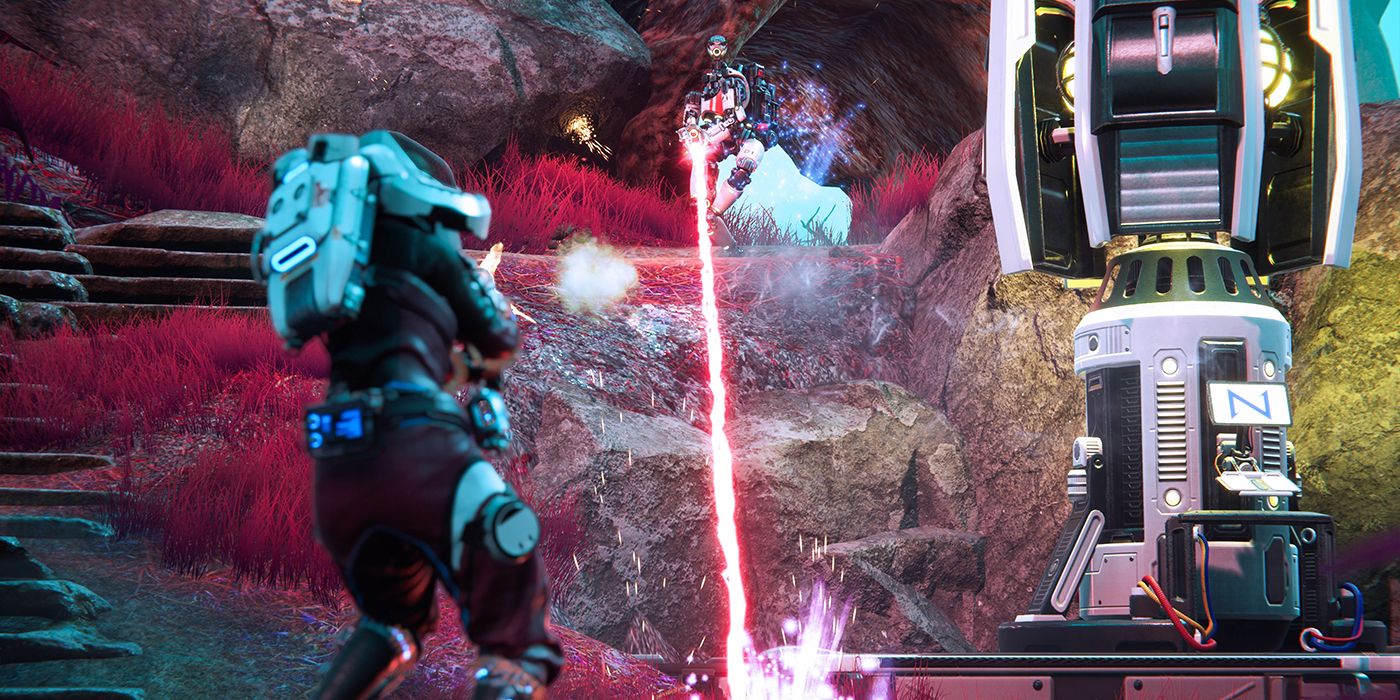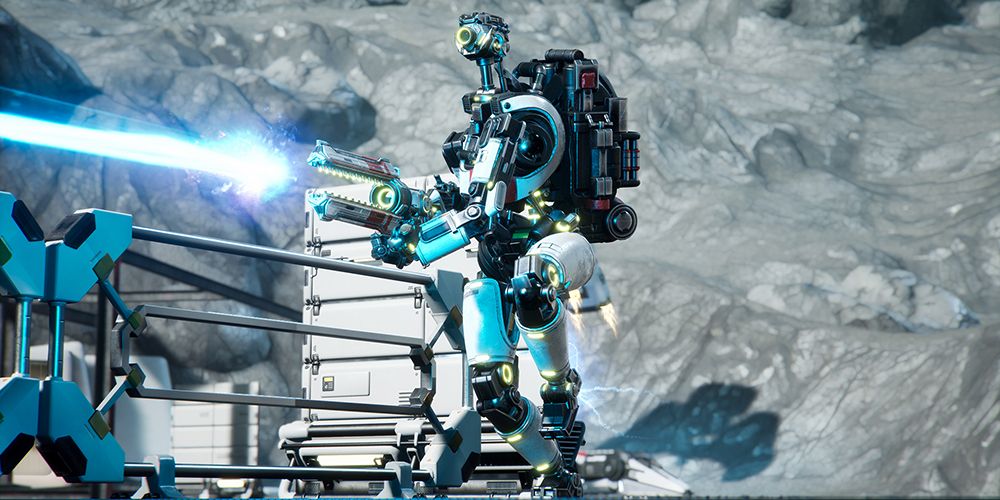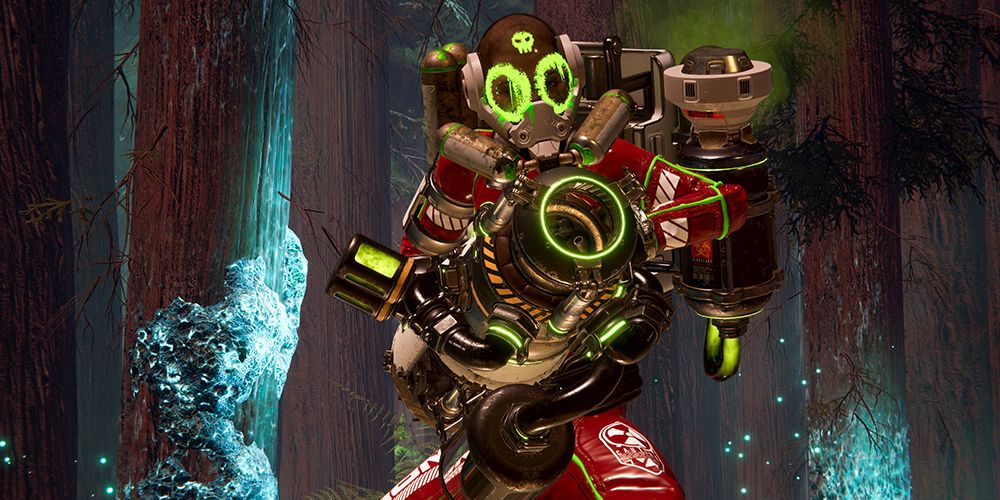Gamers beginning to tire of the familiar hero-squad shooter formula should keep an eye on Lemnis Gate. So should fans of turn-based strategy titles. And chess players. The list goes on, as Lemnis Gate marries an already-clever mechanic to a truly novel turn-taking format. The game is a science-fiction-themed, strategic squad shooter that plays out over the course of a time loop. Even if that concept sounds like it makes sense, experiencing it firsthand is initially overwhelming. But once players acclimate to the rhythm of the game, intimidation gives way to exhilaration. Combat becomes the sort of thought experiment that begs for another round, and haunts players with strategic ideas between sessions.
It has yet to be seen how robust Lemnis Gate's meta truly is—a question that only a massive, multiplayer crucible can answer. But based on Game Rant's brief time with the title, Lemnis Gate's 'thinking with time-loops' may be the equivalent to 'thinking with portals' for competitive multiplayer shooters. Gamers may seize upon the 'time-loop' phrase, and wrongly assume they have Lemnis Gate's measure. After all, it isn't the first multiplayer game to merge shooters with time-bending mechanics, but the title's turn-taking system is really what sets it apart, as it ruthlessly commoditizes time and forces players to think ahead (and at sometimes, behind) their current turn.
Montreal-based developer Ratloop Games Canada focused on developing a shooter where innovative thinking can overcome superior shooting skills, and so far, they are on a promising path toward success.
The Modern Shooter: Restructured
Regardless of the mission objectives, each Lemnis Gate match consists of 25-second turns, alternating between players. Each player gets five turns where they must select a hero with unique weapons, abilities, and movement speed and take action accordingly. Each player has access to the same pool of characters, and they can only use a given character once per match. The game's 1v1 mode is comparable to Capture the Flag, with both players trying to retrieve orbs of the game's unobtanium and return it to their base to gain points.
The dynamic is best explained with a hypothetical. In the first turn, I select Kapitan, the basic Soldier: 76-esque hero outfitted with an assault rifle and frag grenades. I retrieve an orb—unopposed, since this is the first turn—and return it to my base. Meanwhile, my opponent surveys my actions with an aerial drone that can fly freely through every nook and corner of the battlefield, marking opponents and objectives to track them when it is their turn. Then it is my opponent's turn. They pick Rush—the quick, Tracer-like, dual wielder—use him to shoot my Kapitan dead, grab the orb I dropped, and pick up another orb on the way back to their base. In the space of a turn, the score has flipped from 1-to-0 to 0-to-2.
But next round, I pick Vendetta, a character similar to TF2's engineer class, and set up a turret in front of the first orb. My hope is that the turret will kill my opponent's Rush before he can kill my Kapitan, reclaiming my one-point lead and nullifying his gains. I'm a little bit late though, and even though my turret does kill Rush, he manages to take out Kapitan first. Now the score is 0-to-0. My opponent has an option: do they cut their losses and start skirmishing on another part of the map? Or do they roll in with Deathblow, take out my turret with a rocket launcher before I can kill Rush, and reclaim his 2-point lead? And more importantly, how will I prepare for those possibilities? Scenarios like this are the starting line for Lemnis Gate.
In addition to its orb-capture 1V1 duels, the game also features an area-control 2V2 mode. But rather than standing idly at a capture point, players must shoot a semi-shielded core to convert it to their side. This introduces another element of strategy; do I shoot the guy shooting my core, or simply try to match his DPS, negating his point gain, and setting my partner up to take him out and earn us a capture.
The Ultimate Resource
Restricting character actions to 25-second bursts introduces a crucial metric for finetuning balance: time. In addition to firing rates, damage, recoil, and other shooter staples, cooldowns and deployment times are absolutely paramount. Every second needs to be optimized in Lemnis Gate, especially where strategy is concerned. Victories are inevitably ephemeral, and mistakes must be repurposed as feints, but that is not to say that skill is a non-factor. Players who can score a headshot from across the map with enough time leftover to grab orbs will have an obvious advantage over those who need to take extra time aiming down the sights. Ratloop has stated that the game has an incredibly high skill ceiling, though it forces combatants to flex different muscles than most shooters.
As a result, Lemnis Gate will not appeal to all shooting fans. The staccato rhythm of combat leads to a very different sense of flow than a battle royale, or even another squad shooter. Piloting the drone to assess your opponent's moves, and the pause where players can review prior actions while strategizing can be as important as what they do when controlling a character. Those who want to prove themselves based solely on their skills behind iron sights may find themselves frustrated, or bored by the lulls between the action.
Lemnis Gate is currently in-development, with a release planned for PC, PlayStation 4, and Xbox One later in 2021.



